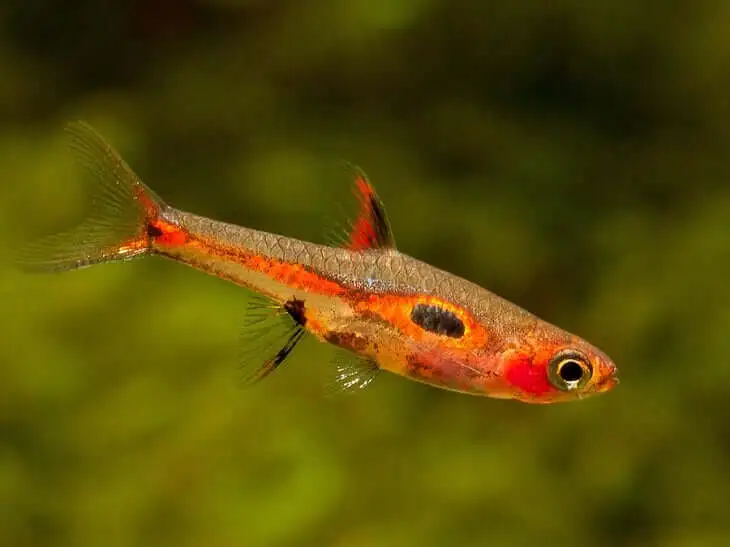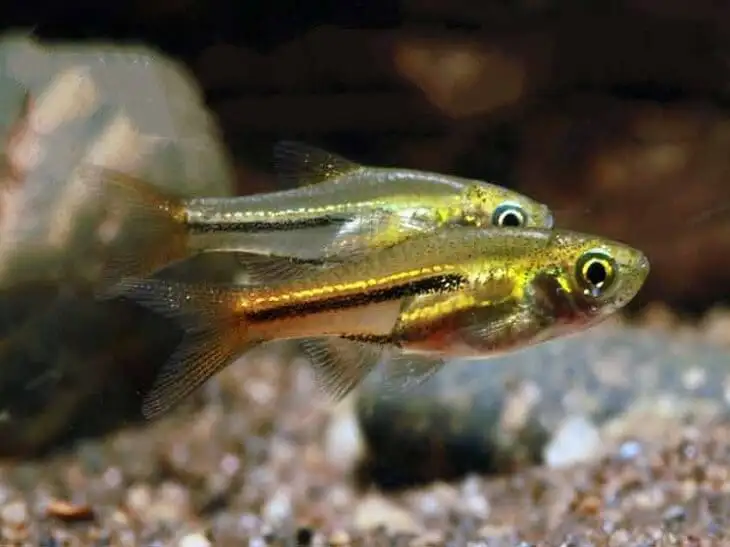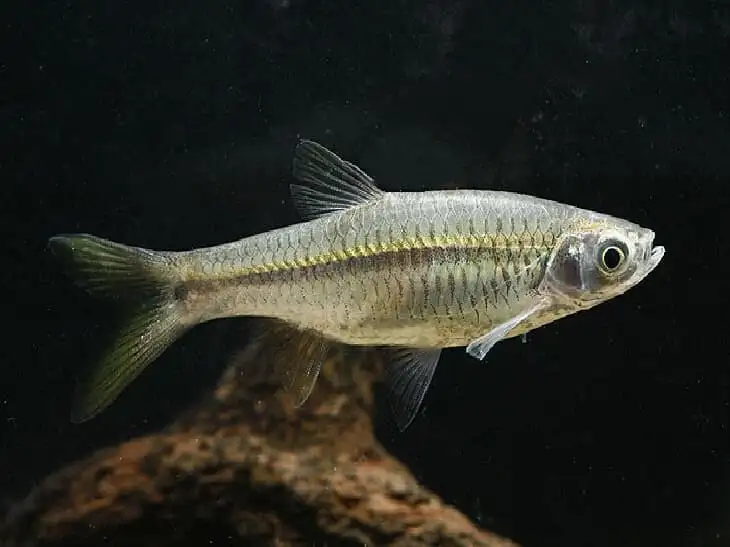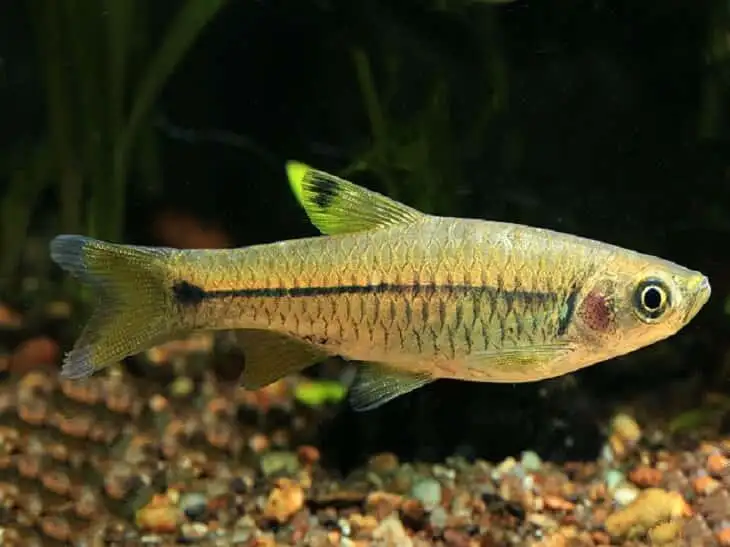Boraras naevus

The Boraras naevus, also known as the strawberry rasbora, is naturally found in water bodies on the Malacca peninsula in south-east Asia. The fish can be found in heavily vegetated lakes and marshes. The water in these places has a brownish colour, which is due to the decomposition of organic matter at the bottom. At present, these fish are on the verge of extinction in the wild, because man has developed intensive agricultural activities in their habitat, making rice paddies.
Boraras naevus are red-orange in colour, with black dots in the central part of the body. The mature females have a rounded abdomen and are slightly larger than the males. The black spots on the body of males are noticeably larger than those of females, and the overall coloration is much brighter. The maximum size of the fish is 1.5 to 2 cm.
Despite their small size, the fish require plenty of free space for swimming. In addition, during the spawning season males form temporary territories, which protect them from other fish, so the fish are best kept in an aquarium with a base size of at least 45x30 cm. The aquarium should be densely planted with various plants, including floating on the water surface, which will serve as a natural light filter, as fish do not like bright light.
Strawberry Rasbora fish very peaceful, which will never and no one trouble in the aquarium. Do not keep these fish in a common aquarium with other, larger fish. Neighbours are suitable fish such as Boraras merah, Boraras Micros, Boraras urophthalmoides, Rasbora espei and others. Keep strawberry Rasboras should be a flock in which there are at least 8-10 fish. In this case they will be less shy, and the males will take on a brighter colour.
Water parameters: temperature 20-28° C, hardness dH 1-10°, pH 5,0-7,0. Filtration should not be too strong, because the strawberry brine in nature keeps places with standing water. You should not run the fish in an aquarium, which has not yet established biological equilibrium, as these fish are difficult to tolerate dramatic changes in the chemical composition of water. Need aeration and weekly replacement of at least ¼ of the aquarium water with fresh.
Coarse-grained river sand should preferably be used as substrate. At the bottom you can place a leaf litter of pre-dried leaves of beech or oak, which 1 time per month to replace the new. Also in the middle of the aquarium, preferably install a large snag in the shade of which will hide these fish.
The fish do not like bright light, so keep the lighting low. If it's problematic to reduce the light intensity, Pistia stratiotes bushes floating on the surface of the water can help, which will serve as natural sphere filters.
Nevus rasbora feeds on worms, crustaceans and small insects in nature. The diet of the fish in the aquarium consists of a variety of dry food, live and frozen daphnia, artemia and small bloodworms. The fish should be fed twice a day.
Reproduction
Under acceptable conditions, Boraras naevus spawn in a common aquarium, but the number of surviving fry in this case will be small. To save the young fish need to breed in a specially designed for the purpose of spawning aquarium of about 15 liters.
At the bottom of the spawning tank should be placed separator mesh or shrubs of small-leaved plants. Two or three pairs of spawners are placed in the spawning tank. Spawning is stimulated by raising the water temperature to 28°C.
Spawning usually starts in the morning hours. During spawning, the females randomly scatter the eggs all over the aquarium. Immediately after spawning, the spawners must be removed, otherwise they will eat the eggs.
The eggs incubate for 24 hours, the larvae feed on their yolk sac for another 24 hours, after which they begin feeding on infusoria. After 1.5-2 weeks, the fry become large enough to eat artemia. The fry are fed four times a day.
The life expectancy of the Boraras naevus in an aquarium is about 3-4 years.







